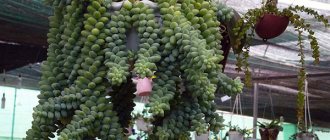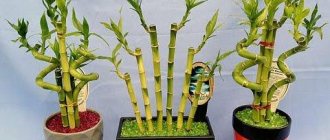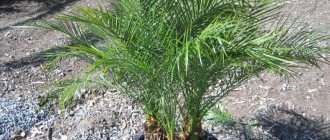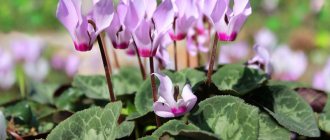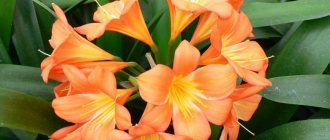Zebrina is a very beautiful decorative deciduous hanging plant that came to us from Central America and Mexico. Not so long ago, zebrina was one of the most popular indoor floriculture crops. Unfortunately, now this plant is undeservedly forgotten and is not often found in our homes. The time has come to revive the former popularity of zebrina, because it is not only very beautiful, but also a useful houseplant.
When the zebrina is young, its shoots have an erect appearance, but then they grow back and droop under their own weight. Falling shoots resemble a lush and seething waterfall, which is why zebrina is used for zoning or decorating rooms, loggias, gazebos, window and doorways, and creating flower arrangements. It is also grown as a ground cover, covering the ground with a dense carpet due to the branching of the stem and strong rooting at the nodes.
The plant owes its name to the color of its leaves, whose longitudinal green, pale green, white, red or silver stripes resemble the color of a zebra (zebrinus from Latin - striped). The shape of the leaves can be oval or ovoid oblong with pointed tips up to 5 - 10 cm in length, and the lower smooth side is purple in color. In varieties bred by breeders, the width of the stripes is different.
Zebrina belongs to the Commelinaceae family. Many people confuse this plant with the well-known Tradescantia, to which it belonged until recently. But some features of the zebrina, for example, the original color of the leaves, made it possible to distinguish it into a separate genus, including 4 species.
Zebrina is a perennial plant, but rarely blooms. During the period from April to August, small flowers can be observed, and each of them consists of 3 petals of a purple, lilac or pink hue. Zebrina is distinguished from the same Tradescantia by its fused-leaved corolla and calyx.
Description
Zebrina pendula f. quadricolor
Zebrina is a perennial ornamental plant belonging to the Commelinaceae family. The leaves can be oval or ovoid, oblong in shape with pointed tips. The leaf blades have slight pubescence. The front part of the leaf is covered with two wide white stripes. The inside is painted red-violet. The length of the leaf plate is 5-10 cm, width 4-5 cm.
The stem is fleshy and erect, but as it grows, it begins to spread along the ground or fall out of the hanging pot. Creeping shoots. Zebrina blooms rarely; from April to August, small flowers can be seen on the plant, each of them consists of three petals of purple, lilac or pink.
The flower is native to Mexico and Central America, where it grows as a garden perennial. We grow it as a houseplant in a hanging pot. The flower is quite easy to care for and resistant to diseases.
The plant was considered a relative of Tradescantia. Outwardly they are very similar. However, the zebrina was separated into a separate genus, because The unusual color of the leaves and the structure of the inflorescences are unique to this flower.
What it looks like, what family it belongs to
This is a perennial evergreen plant. Belongs to the Commelinaceae family.
Creeping stems are violet-purple and succulent. They reach a height (length) of 0.4-0.6 m. The inflorescences are located in the axils at the tops of the shoots.
Leaves are alternate, sessile. They can be broadly lanceolate, rounded at the base or oval and pointed at the end. They reach 7 cm in length and 3 cm in width. They have features depending on the variety:
Tradescantia zebrina will be a wonderful decoration for the office or home.
- Hanging zebrina - large, bare, ciliated. The inner region is purple-scarlet; on the outer side, on the sides of the central vein there are 2 silvery stripes on a reddish-green background;
- purpusa - the inner side is purple, the outer side is red-emerald, with a small fluff. There are no clear silver stripes;
- flocculose - whitish, with soft pile;
- Tradescantia zebrina lilac (purple) - red-lilac with two whitish-green stripes.
For reference! Tradescantia is grown specifically for its foliage. Flowers have no decorative value.
History of appearance
The plant was named after the Tradescant father and son. They were English naturalists, travelers and collectors of flora.
Motherland
The homeland of Tradescantia is the tropics and temperate climate zones of America. The natural range extends from northern Argentina to southern Canada.
Kinds
There are several popular types of zebrina suitable for growing indoors. Let's look at the most popular of them.
Tradescantia zebrina (Zebrina pendula)
Tradescantia zebrina (Zebrina pendula)
Tradescantia zebrina (Zebrina pendula)
Zebrina pendula Tradescantia
is very popular. This is a bare-stemmed plant with hanging shoots. The leaves are ovoid in shape with an elongated tip, they are arranged in two rows. Along the plate there are two light and clearly defined stripes of silvery-white color. The interior is painted in shades of violet, pink or purple. The shoots take root easily and adapt to any conditions.
Zebrina purpusii
Zebrina purpusii
Zebrina purpusii
Zebrina purpusii
The recumbent stems have slight pubescence. The leaf blade is about 8-10 cm long. The inner side of the leaf is smooth and purple, but the front part is pubescent and has a purple-olive hue. A plant of this species does not have distinct stripes on its leaves. If zebrina purpus develops in the shade, the lack of light will provoke a change in color - the leaves will turn green. Small inflorescences are painted pink.
Zebrina pendula f. quadricolor
Zebrina pendula f. quadricolor
Zebrina pendula f. quadricolor
Hanging zebrina (Zebrina pendula f. quadricolor)
It is distinguished by its variegated color. There is a green tint running through the center, and closer to the edge it becomes red-green with white stripes. The reverse side is pink and purple. The front side of the leaf is pubescent, the inside is smooth.
Zebrina flocculosa
Zebrina flocculosa
Zebrina flocculosa
Zebrina flocculosa
The leaves of this species are light green or whitish in color. The leaf blades are pubescent. The flowers are purple.
Origin story
In the distant seventeenth century, John Tradescan served as the chief gardener for the English king Charles the First , and was also a scientist-researcher and traveler. At that time, the newly discovered continent of America was being actively studied, and a huge number of plants unknown in Europe required classification and naming.
Among this diversity, John's attention was drawn to an inconspicuous, creeping plant from the tropical forests. It did not have beautiful flowers, but was distinguished by its unpretentiousness and rapid growth.
Tradescan realized that this plant had wonderful prospects and took a serious approach to its cultivation and cultivation.
Among the many indoor plants, few people do not recognize this plant and call it by name, remembering him - the gardener Tradescana .
Caring for a zebra at home
If the correct lighting and watering regime have been selected for the plant, then there will be no problems with its care. It must be remembered that the zebrafish quickly adapts to the conditions of an enclosed space, but needs regular ventilation.
In a young zebrina, the shoots grow upward and have an erect appearance, but over time they grow back and begin to droop under their own weight. Falling shoots perfectly decorate a hanging pot. In open ground, zebrina can be grown as a ground cover plant.
Temperature
Zebrina feels good at room temperature that is comfortable for humans (18-25°C). In winter, the temperature should not be lowered below 13°C.
Light
Zebrina loves bright light very much. The room where the plant is located should not be shaded during the daytime. In summer, the zebrina can be taken out onto the balcony or veranda. In poor light, the plant loses leaves abundantly and grows slowly.
Place
An ampelous flower can be grown on a stand or hanging pot. Zebrina will do well in the brightest room. If the window faces south, the plant should be shaded to prevent direct sunlight.
Sometimes zebrina is planted in open ground, especially in summer.
An excellent option for placing zebrina in the house would be between the windows, since the plant needs light and regular ventilation.
Humidity
Zebrina can withstand missing 1-2 waterings. Does not require additional moisture. On hot days, spraying the aboveground part once a day is allowed. In winter, zebrina should be placed away from heating devices, and the number of sprays should be increased to twice a day, since heating dries out the air greatly.
Watering
The plant needs watering all year round, but it should be reduced during the winter months. Excess water coming out of the drainage holes must be removed.
In summer, spring and autumn, 2-3 waterings per week are enough; the earthen clod should not be allowed to dry out. In winter, moisturizing is recommended once a week.
Trimming
To stimulate growth in zebrina, it is necessary to pinch long shoots. No formative pruning is required. The plant may lose its leaves, so several seedlings need to be planted in a pot. Rotten and diseased shoots must be cut off.
Top dressing
Zebrina especially needs fertilizer during the period of active growing season and flowering (from March to late autumn). It is necessary to use complex mineral supplements suitable for indoor flowers. They are required to be paid monthly. At the same time, you cannot overdo it, so it is recommended to apply mineral fertilizers in a dose less than 2 times that indicated in the instructions.
From October to February there is no need to fertilize. It should be remembered that an excess of fertilizers is just as harmful as a deficiency.
Wintering
From October to March the plant goes into a dormant state. Watering is reduced to once a week, fertilizing is stopped altogether.
Transfer
Plants up to 2-3 years old need to be replanted annually. The procedure must be carried out in early spring. It is enough to replant adult flowers every 3 years.
A universal flower soil is suitable for zebrina. You can independently mix 2 parts of leaf soil and 2 parts of turf soil, add 1 part of coarse sand to them. Another option is to take turf soil, peat soil, humus, sand in equal proportions and add two parts of leaf soil.
After 3-4 years, the flower loses its decorative effect due to lost foliage. Therefore, many gardeners do not replant zebrina at all, but purchase or grow a new one. Moreover, growing a new zebrina is quite simple.
How does it reproduce
Tradescantia - home care
Tradescantia reproduces in several ways.
Reproduction by children
This is the most effective and simplest method of reproduction:
- cut off the top with 3-4 leaves from the shoot;
- dig in for rooting. Provide abundant watering;
- There is no need to cover with glass or film. The shoots will take root without a greenhouse after 1-1.5 weeks.
When the bushes begin to actively grow, they need to be planted in separate pots.
Propagation by seeds
Step by step steps:
- distribute the seeds evenly over the soil without pressing too hard;
- moisten the soil with a fine spray bottle;
- cover with glass or film. Place in a bright, warm place at a temperature not lower than +20°C;
- remove the shelter daily to ventilate and remove condensation from the walls;
- When shoots appear, remove the cover;
- monitor the soil moisture. Do not allow it to dry out;
- Dive the stronger bushes into separate pots (when they have 4 true leaves).
Seed sowing occurs in the spring.
Plant division
When the bush has grown greatly, it can be divided into several small ones. Division must be done during transplantation. Carefully divide the rhizome into parts and place in separate pots. During the first week, shade the bushes and water them moderately.
Transfer
The plant can be replanted from the shipping container a week after purchase, when it adapts to the environment. The new pot should be 2-3 cm larger than the previous one, wide but shallow.
In the future, young bushes need annual picking. Adults - once every 2 years. This is done by transshipment so as not to damage the root system.
Zebrina breeding
It is very easy to propagate the plant. In addition, zebrina can be propagated throughout the year. The simplest and most common method is vegetative (cuttings). You need to cut strong cuttings about 5-8 stems long, they should have a growing point.
Cuttings can be rooted in water or directly in the ground; the second option is simpler and faster. To do this, you need to take a small pot measuring 11 cm in diameter and plant several cuttings in it at once next to the walls of the container. When the cuttings take root, they can be planted in separate pots or left in one.
Botanical characteristics
In the wild it grows in tropical rainforests, along river banks and wetlands in Mexico, Central America, and Colombia. Small plantations are present in South America, Africa, Asia and Australia.
Belongs to herbaceous semi-succulents. In its natural environment it grows up to 1.20 m. When grown at home, it has a compact shape. With properly organized care, it grows intensively in the form of a lush creeping clump.
Description:
- height varies from 15 to 60 cm;
- the stems are flexible, the growth is cascading and creeping, they have the ability to take root in the soil, there is no pubescence, the color is in shades of red and green;
- foliage up to 5 cm long, oval shape, pointed at the ends, variegated color, pink-violet, glossy surface with a characteristic shine, most varieties have silver stripes on the sides, the underside is purple-violet,
- umbellate inflorescences, formed by small three-petalled pink-violet flowers;
- the root system is formed by fibrous branches growing in breadth;
- fruits in the form of a three-leaf capsule, the number of seeds is usually 2 pcs.
Zebrina blooms when grown in open conditions from late spring to early summer. Indoors flowering lasts from September to February.
Zebrina diseases and pests
The plant withstands climate change and practically does not get sick. However, regular violation of care reduces the zebrina’s immunity, as a result, the appearance of the plant deteriorates, and pests appear.
Zebrina tends to lose leaves, so don’t be alarmed. To activate the growth of new leaves, you need to pinch long shoots.
Diseases that signal poor care
- Too much leaf shedding. This behavior indicates a lack of light and overwatering of the earth. But if the zebra is more than 3 years old, then this is a natural aging process.
- The leaves lost their saturation and became equally green. This happens when there is insufficient lighting. In the shade, the zebrina always turns green. In this case, the pot needs to be moved to a more illuminated place.
- White spots appeared on the leaf blades. This is a sign of excessive humidity; reducing watering and spraying will help correct the situation.
- Yellowed leaves that have lost turgor. This is a signal of lack of food and water. It is necessary to increase the abundance of watering and add fertilizer.
- Yellowed tips of leaf blades. They turn yellow due to dry air. Spraying with a spray bottle, installing a humidifier, more frequent watering and moving the plant away from heating appliances will help.
Pests
Zebrina is a fairly disease and pest resistant plant. However, it can also be subject to negative influences. Zebrina can be attacked by the following pests:
- Shield. Leaves behind a sticky mucus that looks like a flat brown growth. The pest should be removed by hand using a cotton swab dipped in soapy water. You can use an infusion of onion or garlic. Then it is recommended to carry out treatment with Mospiran or Aktara.
- Aphid. The pest, feeding on plant sap, secretes a sticky liquid that attracts ants. You can try to kill the pest by rinsing the flower out of the shower. To eliminate the remaining insects, it is necessary to carry out treatment with “Aktellik”, “Aktara”, “Fitoverm”.
- Thrips. Due to the activity of the pest, the leaves begin to deform, the brightness of the color is lost, and brown spots appear. Insects usually hide on the inside of the leaf and are easy to see with the naked eye. For processing you need to use Actellik, Vertimex or Agrovertin.
As a preventive measure and in the initial stages of the appearance of pests, zebrina should be treated with a soap solution.
To prevent insects from fleeing from another plant, it is recommended to plant new flowers in a separate room for quarantine, which should last at least 14 days.
Zebrina is an easy-to-care plant that is great for beginning gardeners. In addition, it is easy to propagate and can be done throughout the year. At the same time, zebrina has high decorative properties, thanks to which it will become an excellent home decoration.
Possible problems
If indoor Tradescantia begins to look different from usual, then you need to pay attention to its care and eliminate mistakes.
- the shoots are bare, the foliage has become sparse: the plant lacks water and nutrients;
- the color of the foliage has lost its variegation: there is little light;
- foliage withers, turns yellow: from lack of moisture;
- the tips of the leaves dry out: due to too dry air in the room;
- Drooping, thinned leaves become watery: the soil has been flooded or dried out. If the soil is dry, watering will save Tradescantia; if the soil is over-watered for a long time, problems with the roots will arise. In this case, it is better to cut off the shoots and root them in a new container.
Transfer
Due to active growth, this type of bindweed regularly needs replanting. There are no specific deadlines for this; you just need to monitor the condition of the plant itself. And as soon as you realize that there is no longer enough space in the pot, you need to replant.
To do this, find a new suitable flowerpot. It should be low, but wide, so that there is enough space for the grown zebra, otherwise its development will stop. But remember that too large a container can cause a problem and lead to acidification of the soil. And be sure to ensure there is drainage in the pot.
As for the soil itself, you should choose nutritious and loose soil.
For transplants, peat substrates are usually purchased, but many amateurs make suitable soil themselves, using a 2:1:1 ratio:
- garden soil (neutral or slightly acidic);
- humus;
- peat.
If desired, the mixture can be supplemented with a small amount of river sand.
Planting miscanthus in open ground
It is important to know that cereal crops tend to constantly increase the volume of the bush, reaching impressive sizes, which means that the plant must be provided with a spacious territory. It will remain here for a long time, but replanting adult specimens is highly undesirable. Any soil is suitable for miscanthus, with the exception of clay and sandy soils.
Residents of the southern regions purchase miscanthus varieties with a late flowering period, while summer residents of central Russia choose varieties of the crop that bloom in July and August. It is recommended to buy adult seedlings, since the cereal crop has a long growing season. The plant will begin to develop only at temperatures of 25 °C and above, so purchasing young seedlings is not advisable.
Limit the planting site of the fan around the perimeter using a special limiter to a shallow depth of up to 15 cm, and raise its edge above ground level so that powerful roots cannot overcome the obstacle. The planting hole should be several times larger than the root system of the plant. Place a little fertile soil at the bottom, then lower the seedling into the hole and compact the soil; after completing the gardening work, be sure to water the miscanthus.
Formation of Tradescantia by weaving along a support
Another way to give zebrina a modern aesthetic look is to let its shoots run along a support. This is done like this:
- the plant is transplanted into a container that has good stability;
- a decorative support in the form of an arc or ladder is placed in the container;
- Zebrina shoots are woven around the support and secured with plastic clips.
In this simple way, you can quickly tidy up even an old, poorly formed bush.
When lifting zebrina shoots onto a support, you need to be careful. The branches of this plant are fragile and break easily.
Medicinal properties
In folk medicine, Tradescantia zebrina is used to treat various diseases:
- Infusion for colitis : 2 tablespoons of crushed mint leaves (dry or fresh) and 1 finely chopped zebrina leaf are mixed in a saucepan, then pour in 0.6 liters of boiling water, cover the container and leave to infuse for half an hour. The finished infusion is filtered through a strainer. Take the medicine three times a day, half an hour before meals, 100 ml.
- Decoction for flatulence : mix 1 teaspoon of finely chopped Tradescantia zebrina leaves with 1 teaspoon of chamomile, pour into a saucepan. Pour the vegetable raw materials with 2 glasses of water and leave for an hour to infuse, then put on fire and bring to a boil. The broth is boiled over low heat for 10 minutes. The strained decoction is consumed three times a day, 40 minutes before meals, 0.5 teaspoon.
- Callus lotion. Zebrina leaves are soaked for 30 seconds in just boiled water, after which they are applied to the calluses (like a plaster) and the lotion is secured with an elastic bandage. After 3 hours, the lotion is removed, and new steamed leaves are immediately applied. After the callus has softened, it is carefully removed.
People have long attributed magical properties to this flower. For example, if there are one or several pots of Tradescantia in the house, an angry person will feel uncomfortable in such a room and will try to leave as quickly as possible. This amazing plant protects its owners from damaging rumors and gossip. Often the plant takes on the diseases of its hosts; this can be determined by the stems suddenly drying out and turning black.
A pot of Tradescantia will decorate your home or courtyard with colorful, lush greenery. The flower needs proper care: watering, air temperature and humidity, timely feeding.

